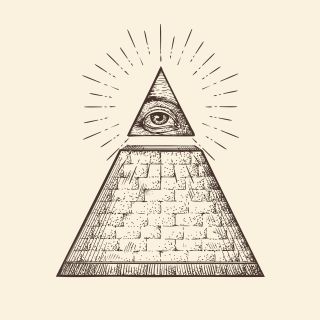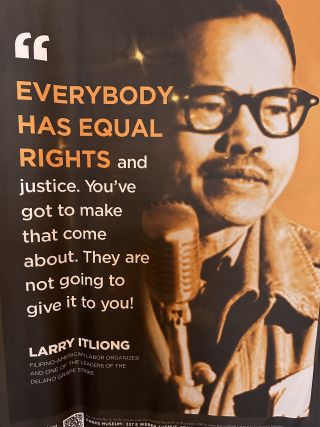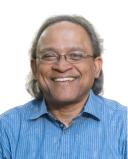Bias
The New Film “Origin” Forces an Acknowledgement of Caste
Personal Perspective: "Origin" posits that caste, not racism, is at work here.
Updated April 13, 2024 Reviewed by Kaja Perina
Key points
- Caste is the material and psychic construction of a social pyramid and hierarchy.
- Caste is an artificial construction that becomes a vicious circle.
- "Origin" provides a powerful entry point to consider the structure of psyche and society.

Can people survive if people prefer something other than people? Can you survive if you, as a person, or your type of people, are disfavored? The answer, of course, is no—and yet we have this kind of disfavor, bias, discrimination, and cruelty built into the structures of psyche and society—so that dominant groups thrive and subordinated groups don’t. Audre Lorde famously wrote, “to survive in the mouth of this dragon we call america, we have had to learn this first and most vital lesson—that we were never meant to survive.”
Author Isabel Wilkerson, and a significant number of social anthropologists, tell us that the blueprint of bias lies in the workings of caste, not racism, per se, as is the common frame here in the United States.
Caste is the material and psychic construction of a social pyramid and hierarchy, assigning superiority, wealth, and power to those at the top, and creating mechanisms to keep the bottom down. Outcomes of caste in America, India, and Nazi Germany were vastly different, in timeline and scope, but all outcomes rest on what could be called a malignant narcissism of in-group love and advance, and out-group hate, conquest, decimation, and exploitation.
I started reading Wilkerson’s bestseller Caste: The Origin of Our Discontents when it was released in 2020. Her allegories and metaphors for the workings of subconscious bias and discrimination were so alarming and on-point that I had to put her book down. It got into the “code,” much like that episode of Star Trek: The Next Generation in which a tactical code brings down a Borg cube. It was difficult to consider the depth of my “assimilation,” or the full impact of a malicious social psyche. (I was also engaged in writing my own anti-racist essays, mostly at East Wind eZine, and making what would eventually be an award-winning anti-racist documentary; 2020 was an intense time with a long tail, leading into this year’s election cycle.)
The ”discontents” in Wilkerson's title might harken back to Freud’s Civilization and Its Discontents. For Freud, the architecture of “civilization” arose from the individual mind as he construed it. Wilkerson might contend that caste is imposed by a punitive “superego” of the collective psyche intent on social domination and authority, what I call the “guard tower” of the collective. Her work aims to provide insight and help broaden and build a stable and inclusive collective conscience.

I didn’t finish reading Caste until last fall. More recently, I learned that I was not alone: Several Black psychiatrists, Asian Americans, and whites have since told me they had been similarly jarred into putting the book down. However, I can now report that Caste is an essential, though uncomfortable, read. Ava DuVernay’s new film Origin (now streaming online) provides a powerful entry point to consider the structure of psyche and society by dramatizing Wilkerson’s life and her reckoning with caste systems in America, India, and Nazi Germany.
Since I was in college, I’ve been saying that dealing with racism is like “training wheels” for dealing with caste in India. Now, I don’t know which is worse. Perhaps either could be a “gravity slingshot” to deal with the other, to use a space flight analogy. Wilkerson and DuVernay make the connection clear.
The are the analogies that got into my code:
-
Casteism is in our subconscious the way that anthrax spores are frozen in permafrost, only to be awakened by climate change—the conditions that make underlying, hidden bias clear.
-
Our society is like an old house in need of a major overhaul: The foundation is cracked, and the roof in danger of caving in, all due to the bias built in at the beginning.
-
We have all been assigned parts in a play that has been running for centuries, and these roles get embedded into our very identities and outlooks.
-
We live in a matrix, a virtual reality with a warped, unseen program—a gaslight—that shapes our perceptions and possibilities.
-
Our social comparisons and society’s ordaining of “superior” and “inferior” are arbitrary; they might as well have been assigned to “shorts” and “talls" as to Black and white.

Caste is an artificial construction, a delusion that is fortified through religious, legal, and financial mechanisms, becoming a vicious circle. You put people down. They then struggle and often take on the unwanted aspects of society. The self-proclaimed superior authority projects into the downtrodden those qualities that it doesn’t want in itself.
Former President Trump, for example, has declared migrants “animals" or “not human.” Linguists have noted how he regularly frames the world in terms of apocalyptic crisis (a “border bloodbath" or “carnage”) with great peril coming from immigrants and Democrats, while positing himself as the savior. From my perspective, this is a demagogic framing of declared superiority and threat from subordinated groups that is part of all caste frameworks. It is perhaps a repetition of the psychic working of the earliest European colonists in America, binding their anxiety by proclaiming superiority and a “manifest destiny” of conquest and exploitation across the continent.
Wilkerson draws on and expands work from scholars including B. R. Ambedkar (Dalit activist and co-author of the Indian constitution); Harvard anthropologists Allison and Elizabeth Davis, and Burleigh and Mary Gardner (co-authors and researchers of the 1941’s Deep South: A Social Anthropological Study of Caste and Class); Suraj Yengde (contemporary Dalit scholar at Harvard); W. E. B. DuBois; John Dollard; Gunnar Myrdal; and Lloyd Warner. She spotlights eight pillars that create and reinforce caste:
-
Divine will and the laws of nature: Caste is divinely or naturally ordained (when in fact it is arbitrary and imposed).
-
Heritability: One’s bloodline determines rank.
-
Endogamy and the control of marriage and mating: Purity and rank are maintained by arranging marriage within caste groups.
-
Purity versus pollution: The higher ranks are “pure” while those at the bottom pollute.
-
Occupational hierarchy: Caste determines what occupations are open to you.
-
Dehumanization and stigma: The language and psychology of contempt reinforce caste.
-
Terror as enforcement, cruelty as a means of control: Violence and threats keep the lower ranks in place.
-
Inherent superiority versus inherent inferiority: Even recently, a Black man in the South told of the alarming “superiority complex,” as he termed it, that he felt coming from whites.
Wilkerson’s work began with a deep dive into understanding the backdrop of social psychology behind George Zimmerman’s shooting of Trayvon Martin in 2012. She wrote in a seminal New York Times piece:
“We do not know what George Zimmerman was thinking as he watched Mr. Martin from afar, told a 911 dispatcher that he looked suspicious and ultimately shot him. But we do know that it happened in central Florida, a region whose demographic landscape is rapidly changing, where unprecedented numbers of Latino immigrants have arrived at a place still scarred by the history of a vigilante-enforced caste system and the stereotypes that linger from it. In this context, newcomers—like previous waves of immigrants in the past—may feel pressed to identify with the dominant caste and distance themselves from blacks, in order to survive.”

We are indeed born out of and inserted into a pre-existing landscape of hierarchy and bias. Critics have questioned Wilkerson’s framing of this as immutable (here and in India), her comparison of the Holocaust to the other caste systems (although Nazis directly borrowed from U.S. segregation laws and conceptualizations of inferiority), and her reliance on psychological underpinnings and radical empathy to turn the tide, rather than calling for concrete financial and legislative change, including reparations.
For me, those critiques are necessary but miss the point. Wilkerson, and now DuVernay, are bringing their timely analyses to our collective psyche, in the hopes that it can “bring down the Borg”—or strike another blow against assimilation into the hierarchy.
If I were to be compassionate and generous, the caste (or central casting) strategy for dominant-group uplift arises from uncertainty itself: an uncertain self-worth, an anxiety for survival, and a deep reaction to vulnerability, precarity, and loss. From this root of discontent, we enter social comparison, and from there, split psyche and society into parts vying for power and control, and other parts that cultivate compassion and relationship.
I can only hope that we can individually and collectively choose the latter path, until, as Bob Marley sang,
“Until the philosophy which hold one race
Superior and another inferior
is finally and permanently discredited and abandoned…”
© 2024 Ravi Chandra, M.D., D.F.A.P.A.
References
Anatomy of a Donald Trump speech. PBS NewsHour, April 3, 2024.
The Bandaged Place: From AIDS to COVID and Racial Justice. My documentary, and the winner of the Best Film at Cannes Independent Film 2021.
Chandra R. Memoirs of a Superfan Volume 15.3: Rejecting Donald Trump’s Racist Visions! East Wind eZine, September 7, 2020.
Chandra R. MOSF 18.12: Election Season 2024: Deconstructing the Trump/Far-Right Playbook and Propaganda, and Constructing a Positive Response From Our Shared Humanity and Reality. East Wind eZine, December 1, 2023.
Wilkerson I. In Florida, a Death Foretold. New York Times, March 31, 2012.
Lorde A. Transformation of Silence into Language and Action. In Sister Outsider, but available online.
Dutt Y. Feeling Like an Outcast. Foreign Policy, September 17, 2020.
Khilnani S. Isabel Wilkerson’s World-Historical Theory of Race and Caste. The New Yorker, August 7, 2020.
Appadurai A. Comparing Race to Caste Is an Interesting Idea, But There Are Crucial Differences Between Both. The Wire, September 12, 2020.
Raju A. Isabel Wilkerson’s Caste: A failed comparison and a deeply flawed book. For Positive Peace Blog, September 18, 2020.
Dunlap CE, Dennis E. Understanding the enduring power of caste. Clinical Psychiatric News, September 24, 2020
Griffith EEH. On Caste and Suffering. Psychiatric News, November 16, 2020




